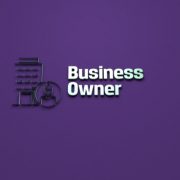Opening a Self-Directed Solo 401(k)? Here’s What You’ll Need to Know
Ask most investors about their 401(k) and you’ll likely hear about the plan they have through work. Yet there’s an alternative that many investors don’t know about: the Solo 401(k) plan. Self-employed people (partnerships, LLCs, S-corporations, and C-corporations) all potentially quality as self-employment activity. While a Solo 401(k) can be a great investment vehicle for many investors, they might not know what a Self-Directed Solo 401(k) plan can do for them, and how it can make them more confident about saving for retirement while self-employed.
While you may not need to be convinced that this is a good idea for investors with specific circumstances, you may need to know more about the opening process. How do you open a Self-Directed Solo 401(k), and what will you need to know as you get started?
First Things First: Qualification
A Solo 401(k) plan requires self-employment. If you operate your own business under a Single Member LLC, for example, then you’re self-employed, which makes investing in Solo 401(k) plans an option. But there are all sorts of situations that may also qualify as self-employment; S-corporations, C-corporations, and even partnerships.
Next, you’ll want to know about earned income. What is earned income? Let’s put it this way: you can’t collect dividends from a stock you own and then claim you’re self-employed as a part-owner of that stock. That’s not how it works. You’ll need to personally provide services to the business in question.
Once you’ve established that you do have earned income through a legitimate business at which you’re self-employed, you’re ready to move on to the next steps.
Funding the Self-Directed Solo 401(k)
If you’re self-employed, then you’ll need to think about how you’ll make contributions to your Self-Directed Solo 401(k) plan. Direct contributions are the most common types, but it’s also possible to transfer or roll over IRAs (such as Traditional, SEP, and SIMPLE IRAs but not Roth IRAs, as Roth IRAs are after-tax IRAs). If you have plans from previous employers, you’ll want to consult a tax and accounting specialist to see about how you can roll over these employer plans into a Self-Directed 401(k).
Even so, funding the Self-Directed Solo 401(k) is only part of the opening process. If you have long-term designs on your Solo 401(k), you will likely continue to contribute to it every year until you reach the appropriate age. At that point, you’ll be able to begin taking distributions from the Self-Directed Solo 401(k).
What is Self-Direction?
Self-Directing in a retirement account means that you’ll work with a Self-Directed IRA administration firm or an “IRA custodian” to handle the administration of your account. Meanwhile, you’ll be free to direct what happens to the funds within the account, provided that you make legitimate retirement investments. For example, you can direct the administrator of the account to make purchases, whether that be purchasing real estate or investing in private companies. This means you have a lot of control over what happens within the Self-Directed Solo 401(k) plan. It also means that you’ll have some decisions to make as it comes to your retirement future.
Self-directing is a habit that affords you a lot of financial freedom. With it, you can invest retirement funds in all sorts of assets, including real estate, precious metals, and more. However, you do need to know the lay of the land, so to speak. And the best way to do that is to work with a Self-Directed IRA administration firm you can trust.
Interested in learning more about Self-Directed IRAs? Contact American IRA, LLC at 866-7500-IRA (472) for a free consultation. Download our free guides or visit us online at www.AmericanIRA.com.









